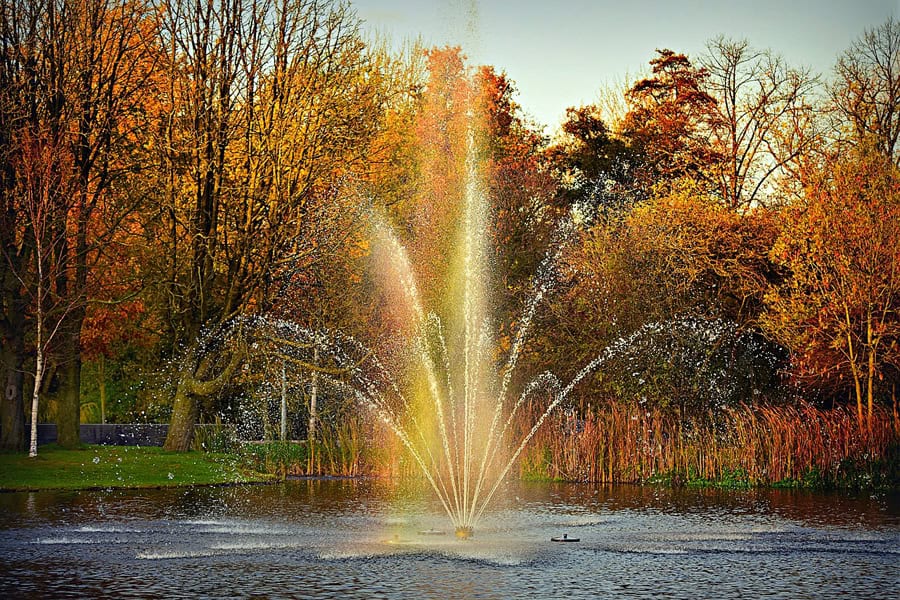Kasco offers a vast selection of fountain display patterns. It is challenging to make a selection based only on the looks. There are other factors that may be even more important than the beauty of the fountain patterns. These factors can make or break your viewing experience. Kasco pond fountains come in all sizes and shapes of patterns, from high-reaching to cascading. So, let us see which pattern will be right for your pond fountain.
The Purpose of Buying the Fountain
You must consider the purpose of buying the Kasco pond fountains. Determine whether you are looking for an elegant focal point, you want to clean up the water quality, or want a 30 ft. pattern that screams for attention. So, know the goal of your fountain, as it will help you select the right pattern and achieve the deserved results.
Kasco Marine employs both engineers and biologists to create stunning displays while still placing an emphasis on pond aeration for the health of your pond. If your pond needs lots of aeration, we recommend that you purchase an aerating fountain or a simple aerator. If you wish to have a vibrant and versatile display and at the same time have reasonable aeration, then a Kasco decorative fountain is recommended. We are happy to help guide you through the process by phone or email.
What Factors To Consider?
Pattern size is the common driving force behind pattern selection, as you are likely to buy a fountain to beautify the pond. But apart from the looks, there is a strong relation between three operational factors that should be considered when choosing a fountain pattern. These include pattern size, flow, and power consumption. Let us take a closer look.
- Flow: It is the amount of water going through the opening in the fountain and is usually expressed in gallons per minute or GPM. Flow is directly related to the oxygen transfer rate (OTR) achieved. Since dissolved oxygen is a primary ingredient for pond health, the biological nature of a pond will demand dissolved oxygen for plants, decomposition, and also for fish and microorganisms within the ecosystem.
- Pattern size: The pattern size is what attracts people to floating fountains. Nice patterns will distract one from eyesores and create white noise that will blanket the clatter from parking lots, roads, and equipment operations. Most ponds utilize fountains that are detention ponds with excess freeboard to handle rain events. A 10-foot high pattern will only appear 5 feet above the crest of the shoreline when using a 5-foot freeboard. This may not provide the desired display. It is common to choose a pattern in which one looks up to see the apex. But if you get a high pattern with little flow, you may get just a thin spray that easily gets blown over in heavy winds and falls short of adequate OTR.
- Power consumption: The amp draw indicates how hard a motor is working. Since volts multiplied by amps give us the watts, it directly relates to what it costs to operate the fountain. You can easily find an electric cost calculator on our website to determine the power consumption. Remember that the more flow and pattern you desire, the bigger the motor and, thus, the higher the cost.
- 120v versus 240v: This is up to the customer. If the cable is properly gauge, 120v should not cost more to operate than 240v (contrary to popular opinion). However, it is rare to find a fountain over 1HP with a 120v pump, as the wire gauge would need to be too thick.
The Bottom Line
Choosing the right fountain pattern requires you to understand these three factors so you can maximize your design and flow and minimize power consumption. Bigger patterns require more pressure, which can result in less flow. A perfect balance of all three will help you achieve the desired results.
Featured Image Source: https://cdn.pixabay.com/photo/2018/11/20/00/28/fountain-3826332_1280.jpg


